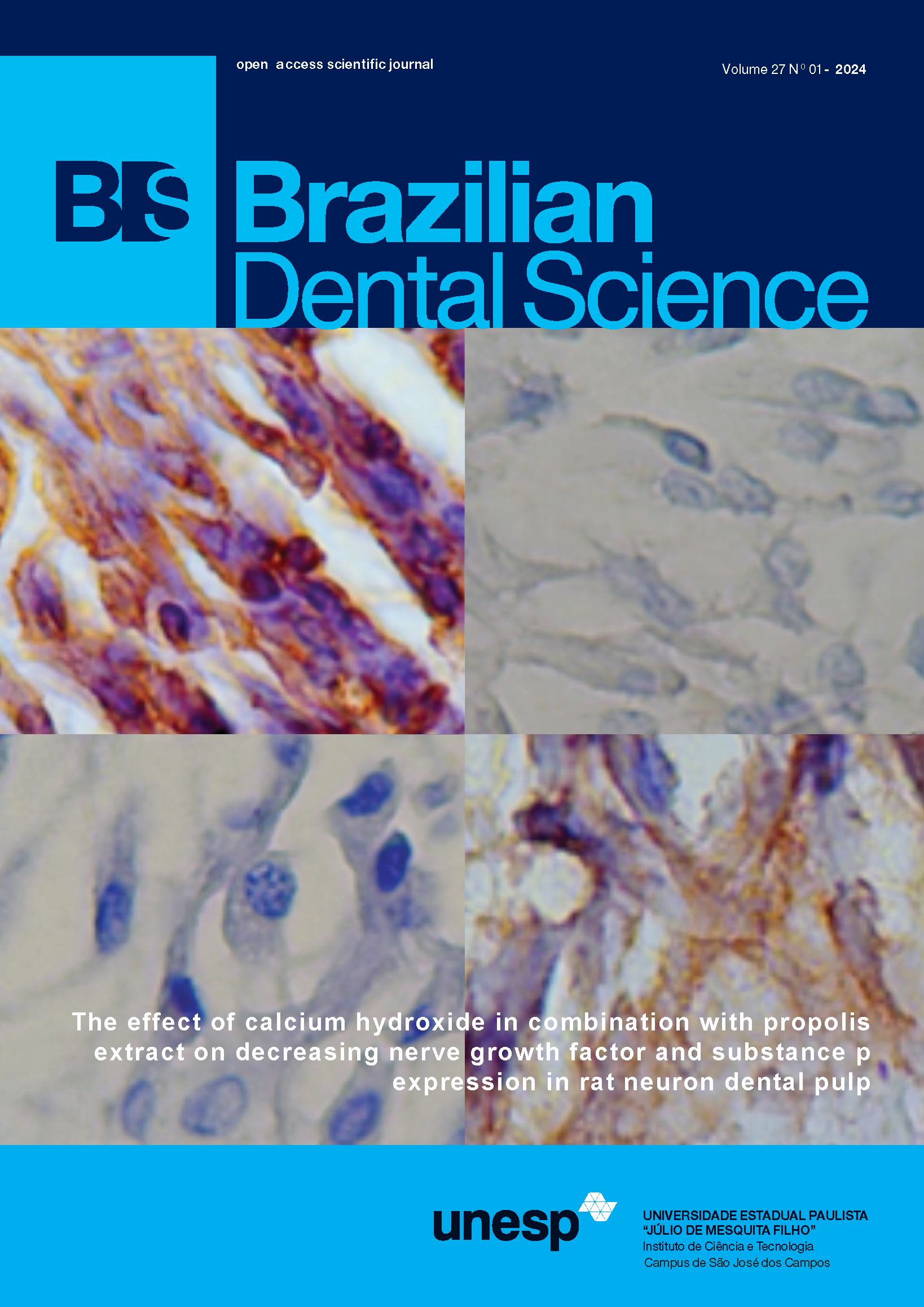Antimicrobial activity of Er,Cr:YSGG and Ultrasonic on E. faecalis biofilm in the mesial root canal systems of lower molars
DOI:
https://doi.org/10.4322/bds.2024.e3904Abstract
The internal topography of the root canal is complex, especially for the permanent molar’s mesial root. In response to such issues, improved irrigation techniques have been created, which use laser pulses to agitate fluids and improve microbial deposit removal. Objective: To assess the effectiveness of the Er,Cr:YSGG laser with a wavelength of 2,780 nm via photon-induced photoacoustic streaming (PIPS) protocol which agitated of 2% chlorohexidine (CHX) in removing mature Enterococcus faecalis (E. faecalis) biofilm in root canal systems of lower molars. Material and Methods: The mesial roots of lower first and second molars were separated and inoculated with E. faecalis bacterial suspension for 30 days. The roots were irrigated with CHX, some of them were agitated with a passive ultrasonic device (PUI), while the other roots were agitated by an Er,Cr:YSGG laser in PIPS at 60 micro s/pulse, 5 Hz, (0.25, 0.5, 0.75, and 1) W. An atomic force microscope (AFM) was used as a new method to get the results in the isthmus area; the obtained results from each group were compared with each other. Results: Based on the AFM and SEM analyses, laser and ultrasonic activation groups showed higher antimicrobial efficacy than the conventional syringe irrigation group (P<0.05). Conclusion: Based on the investigation’s findings, the activation of 2% CHX solution by Er,Cr:YSGG laser in PIPS and PUI offers better mature bacterial biofilm removal in the mesial root of lower human molars than the same irrigant with the SI technique.
KEYWORDS
2% Chlorhexidine gluconate; Atomic force microscope; Enterococcus faecalis biofilm; Er,Cr:YSGG laser; Passive ultrasonic activation.
Downloads
Published
How to Cite
Issue
Section
License
Brazilian Dental Science uses the Creative Commons (CC-BY 4.0) license, thus preserving the integrity of articles in an open access environment. The journal allows the author to retain publishing rights without restrictions.
=================




























